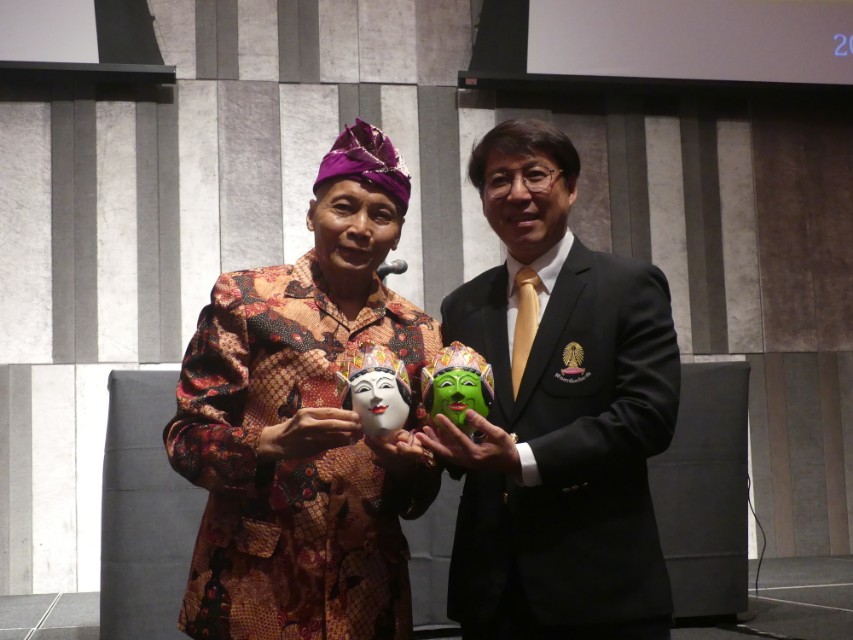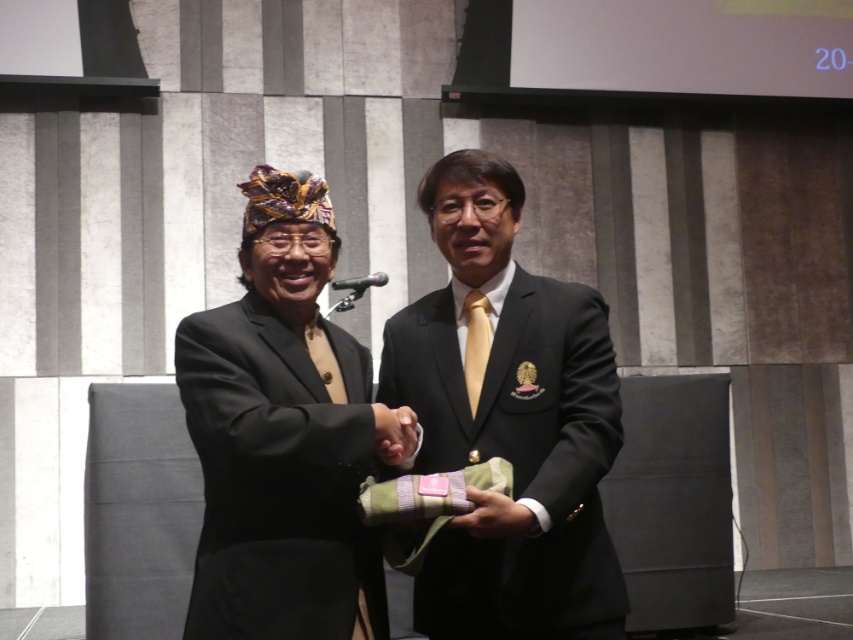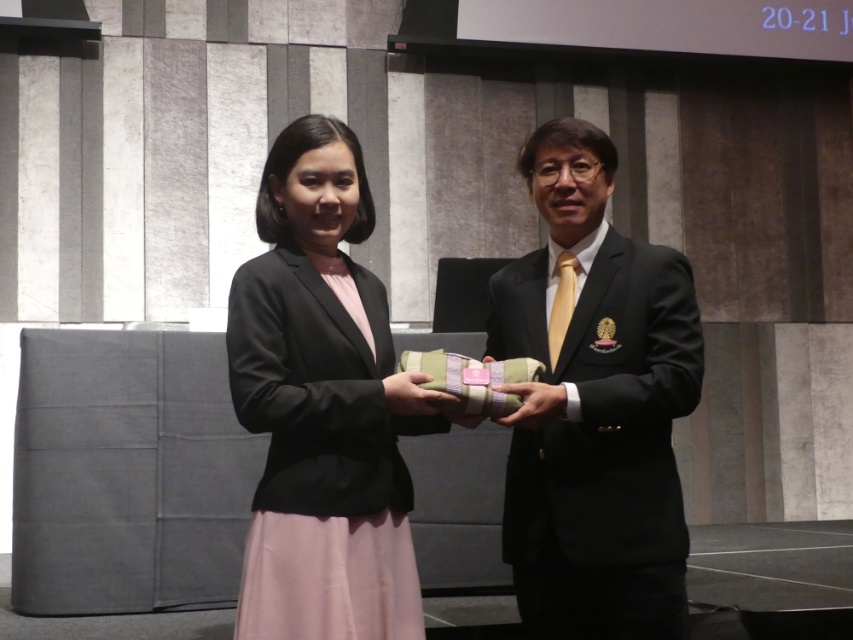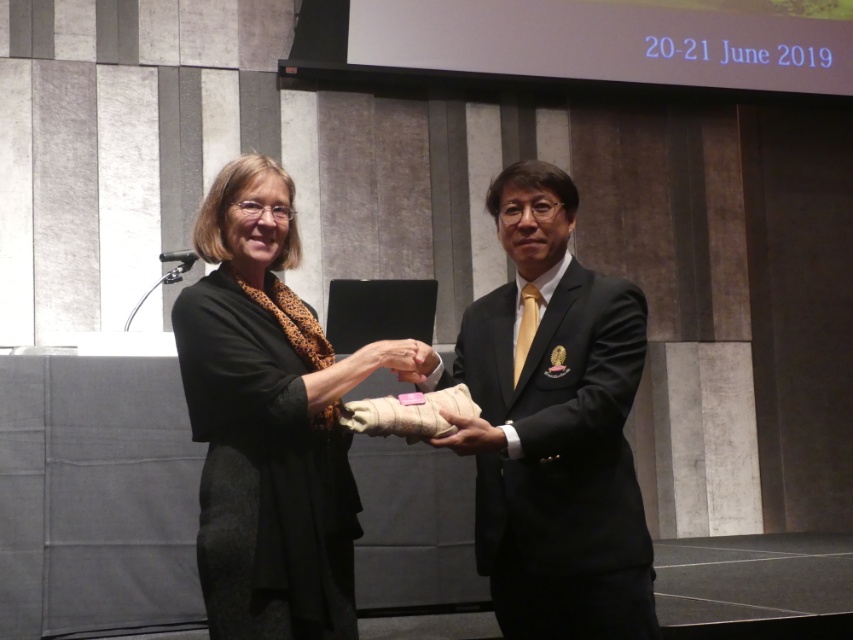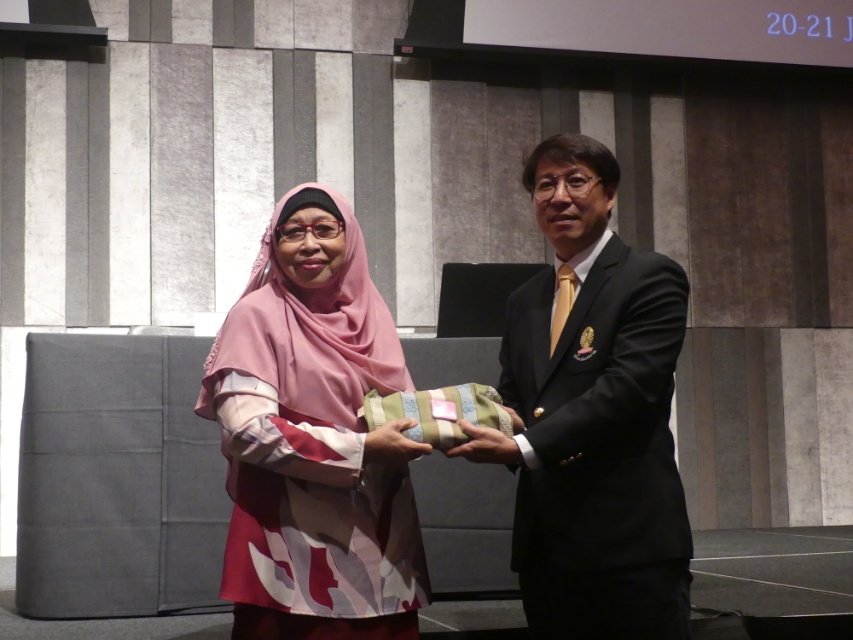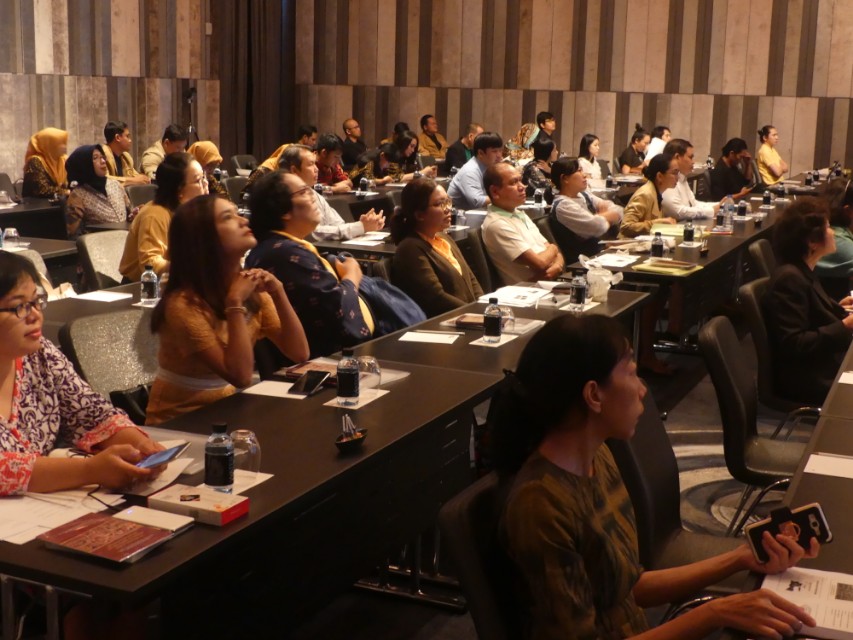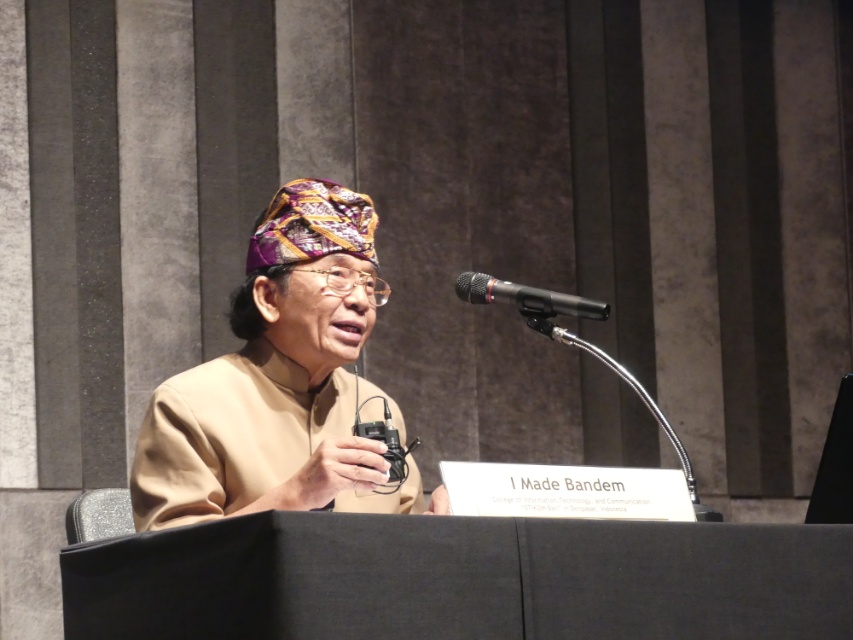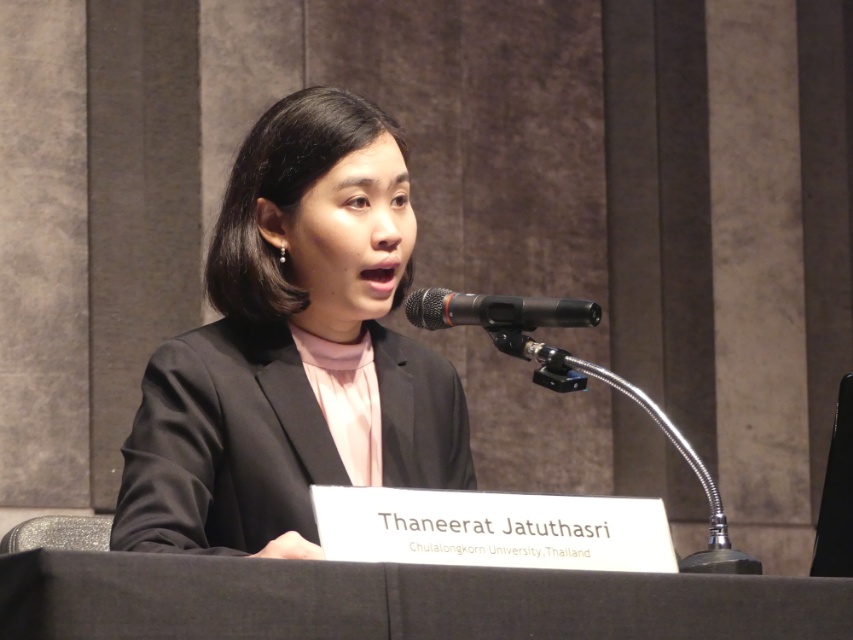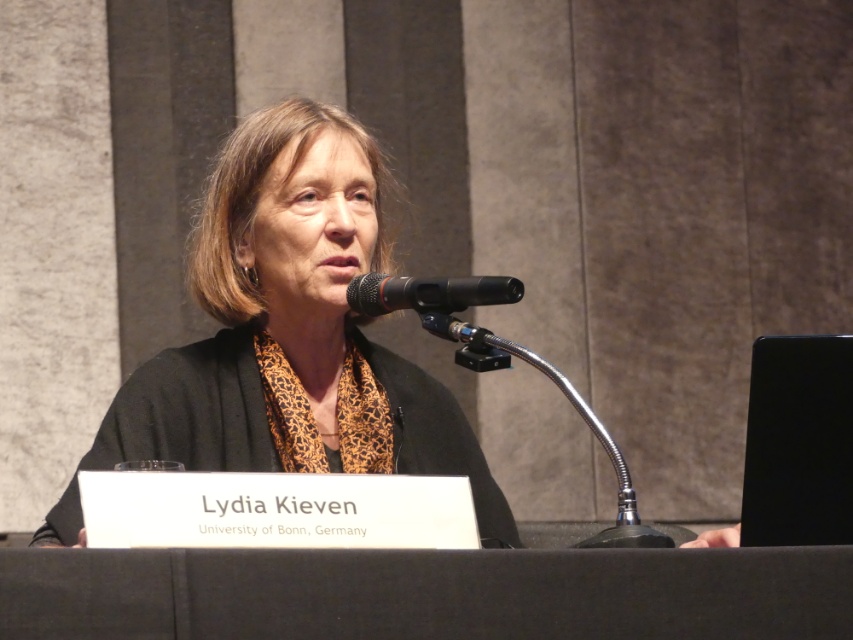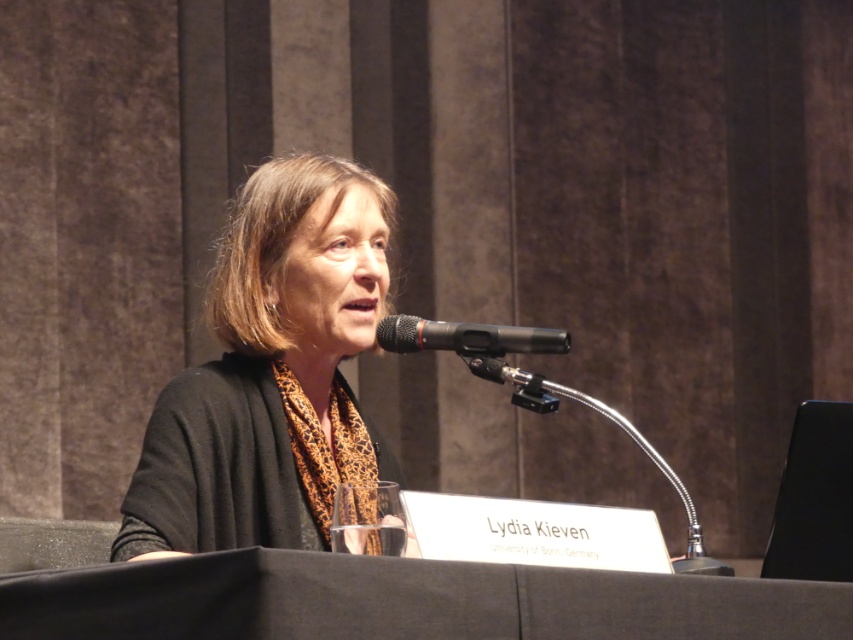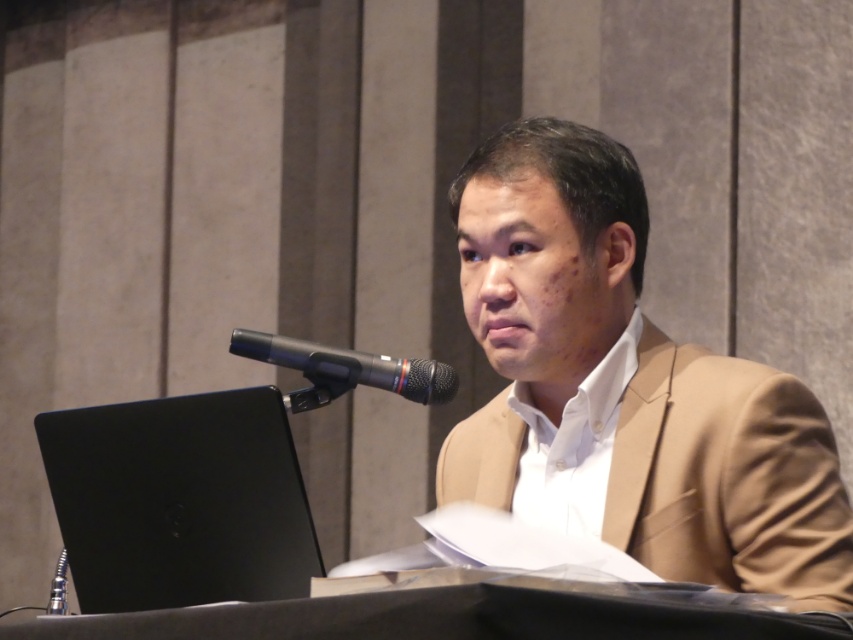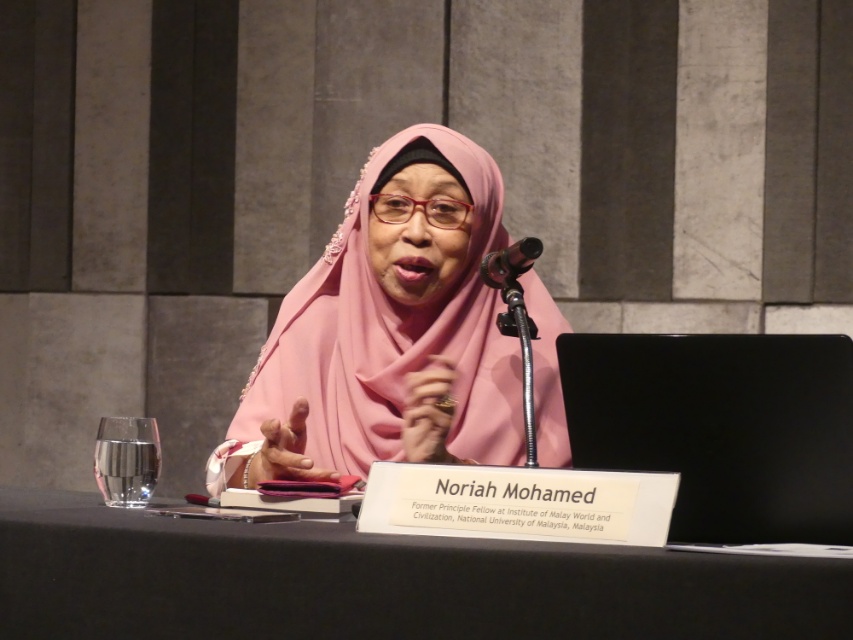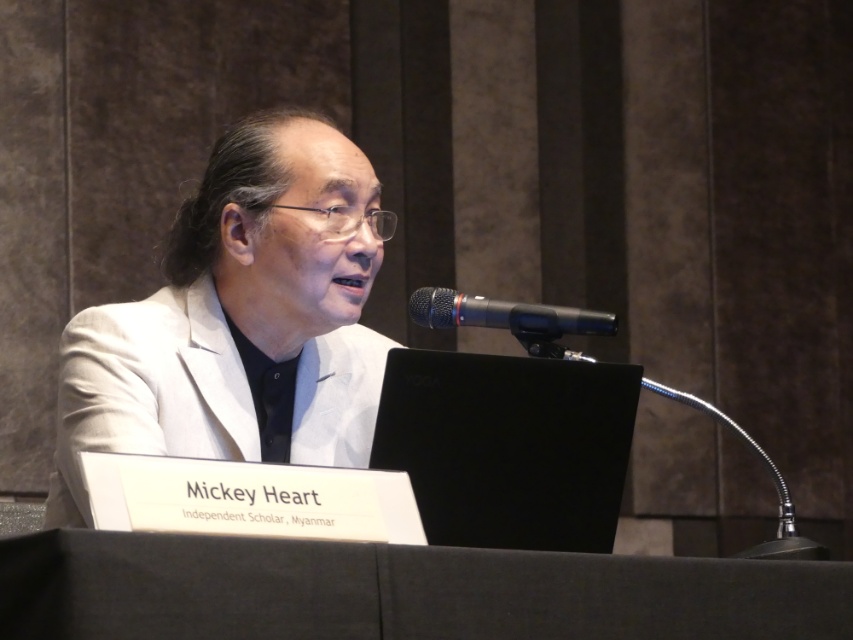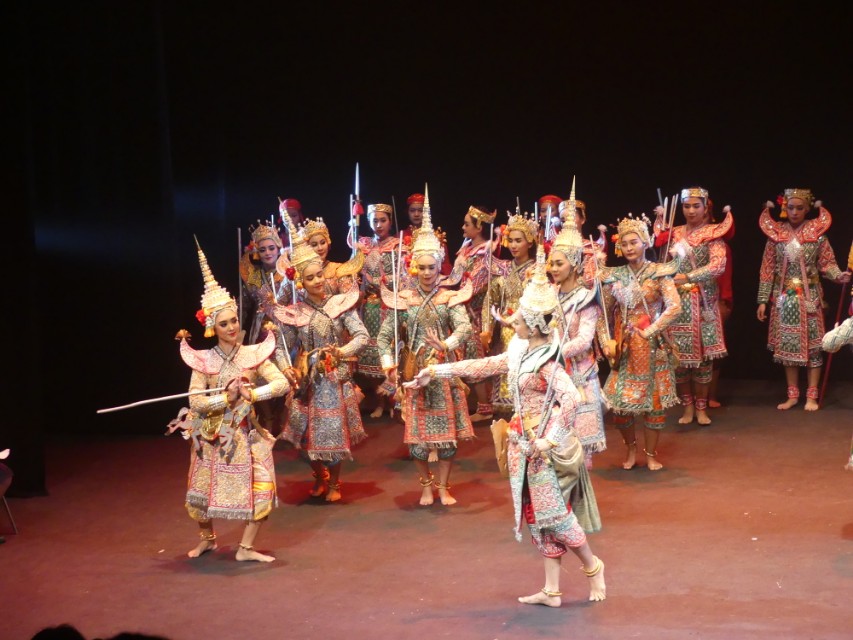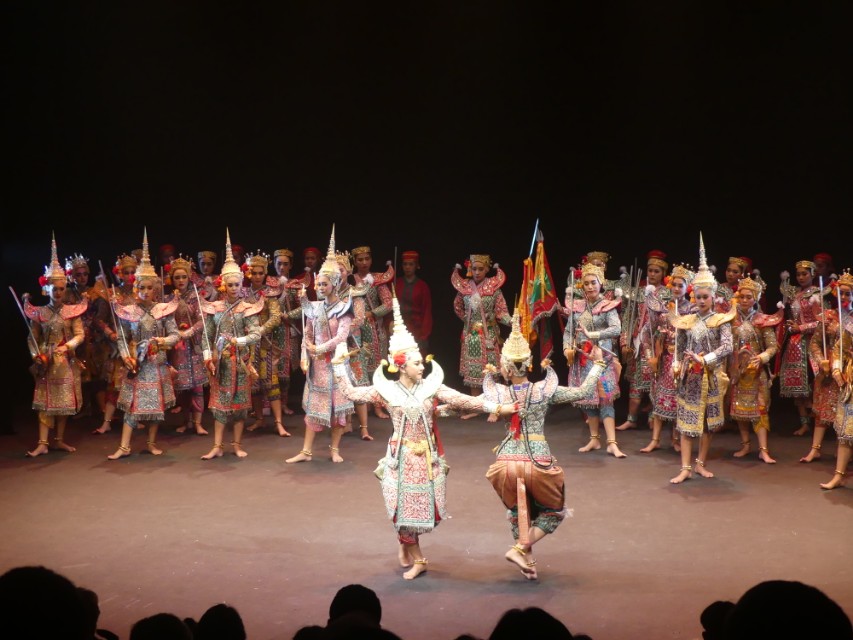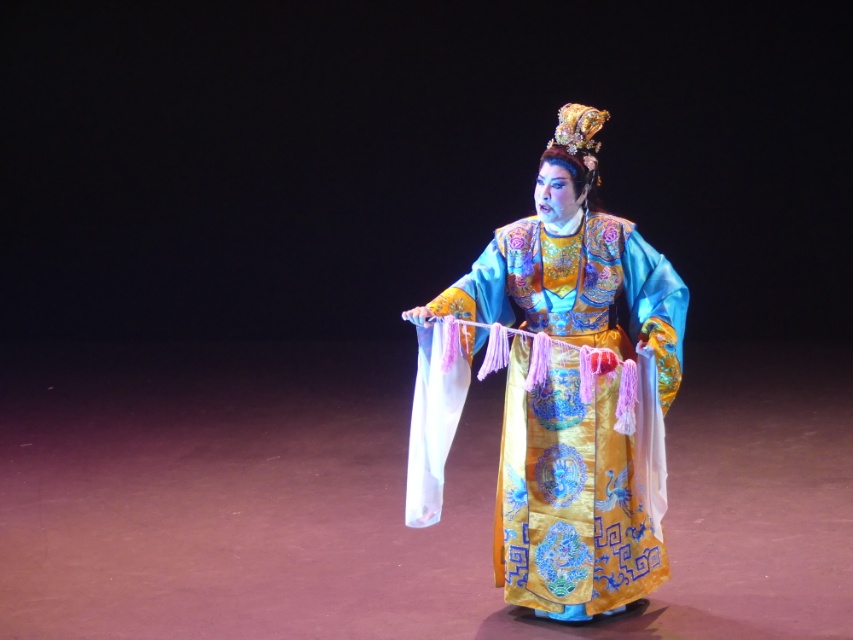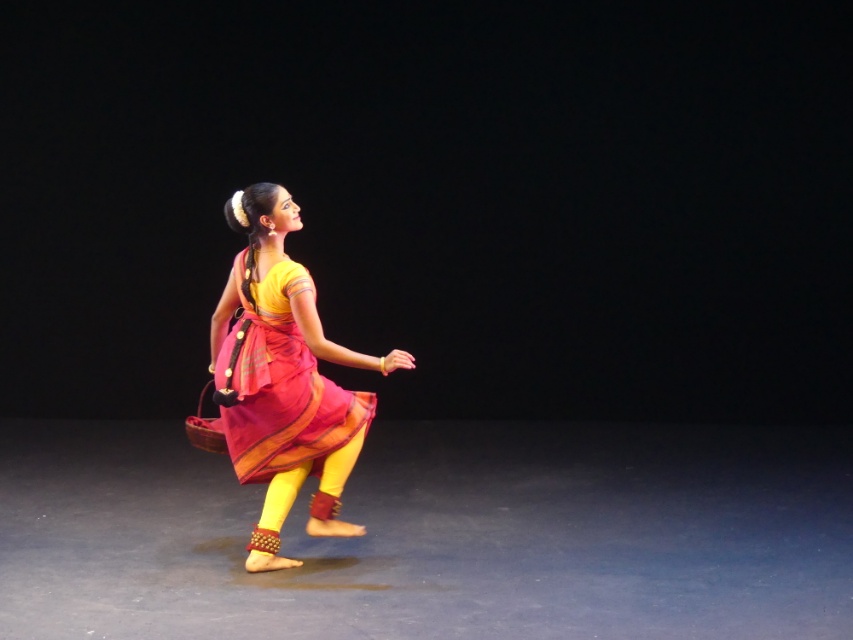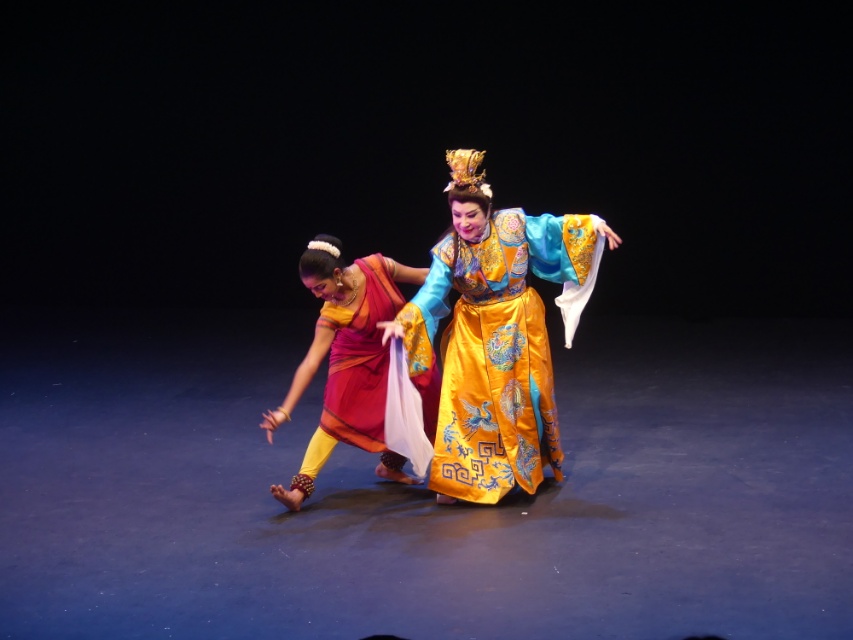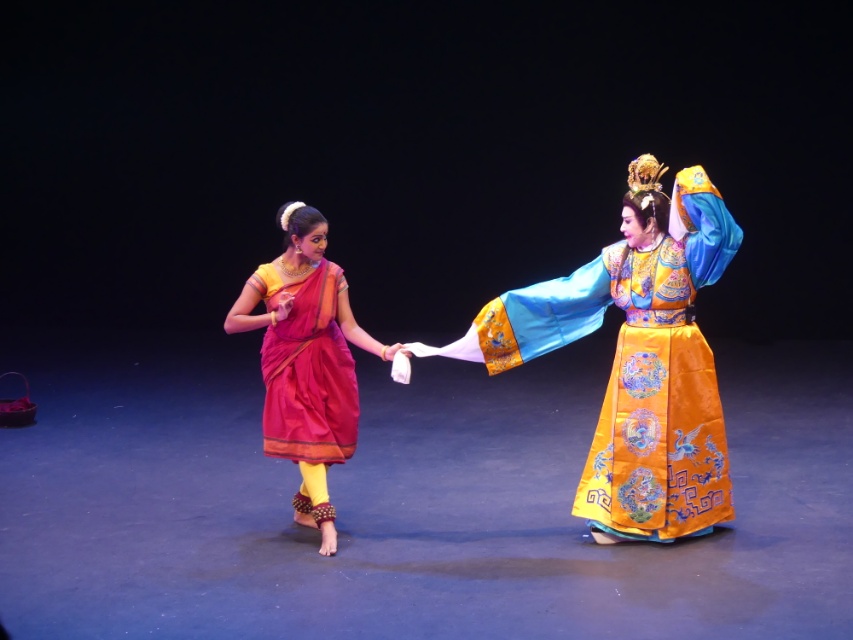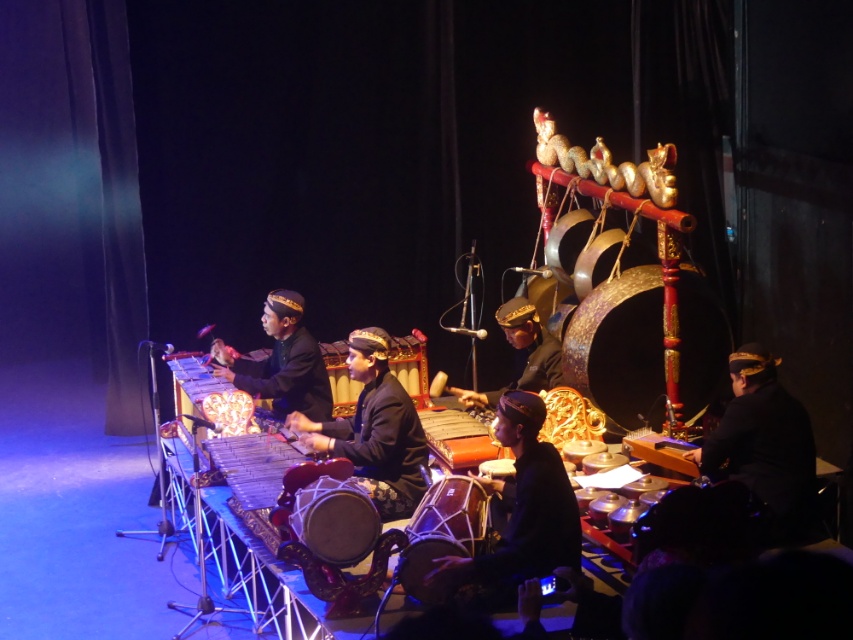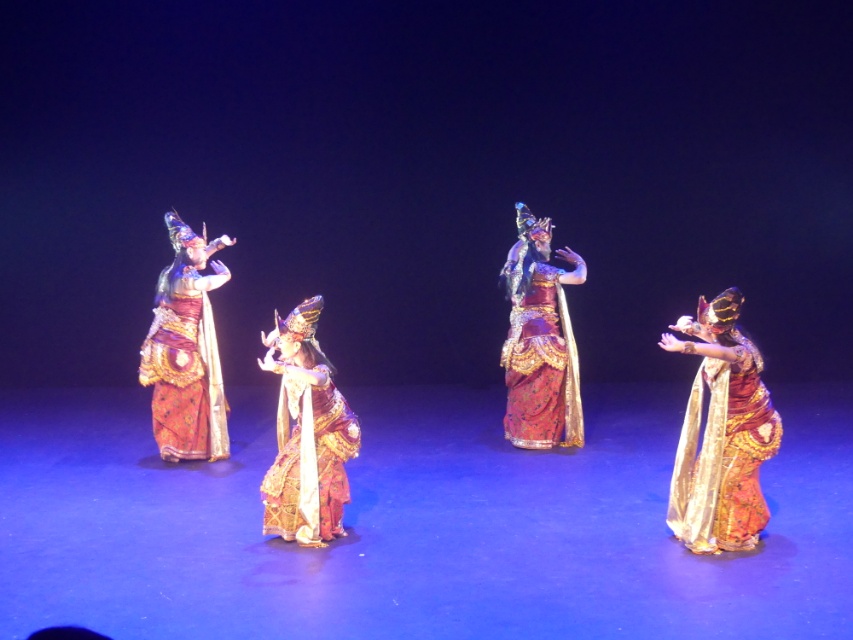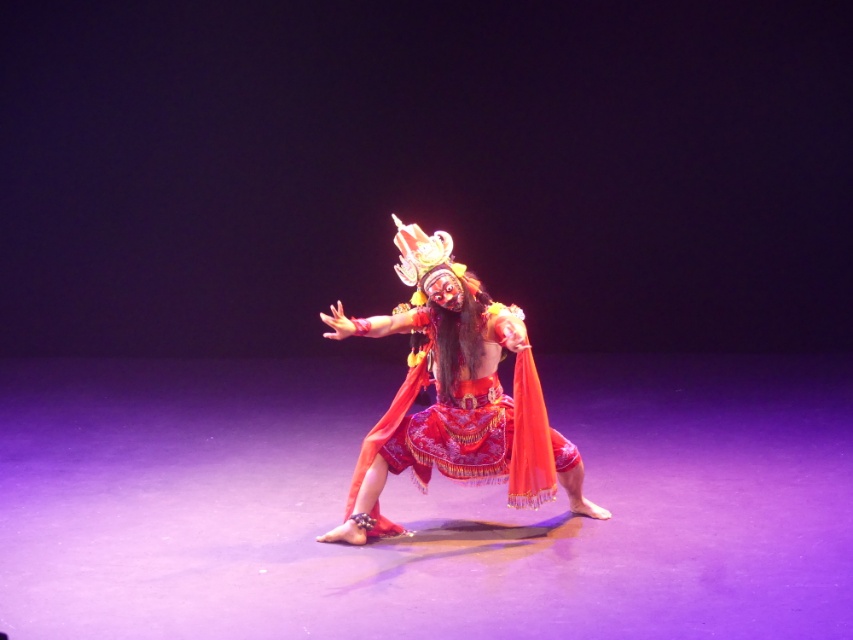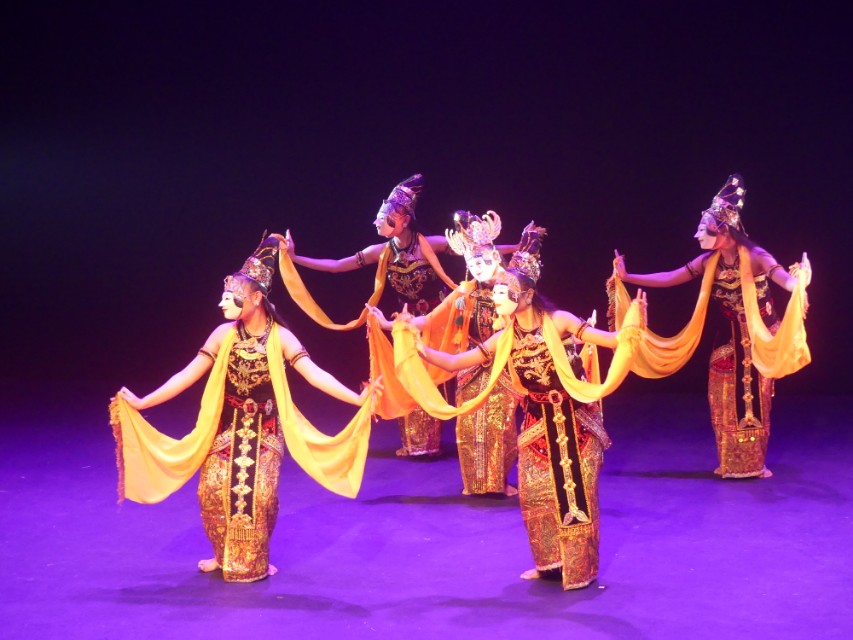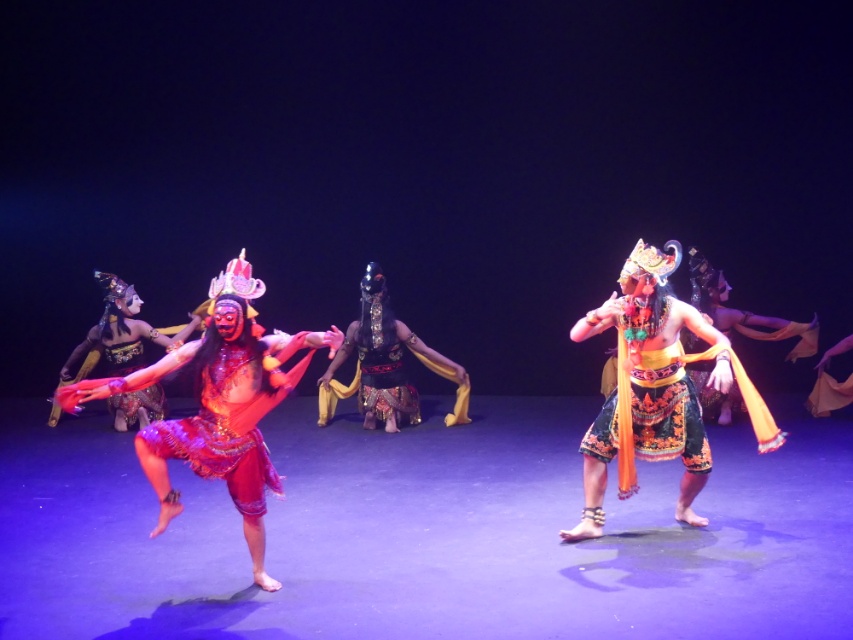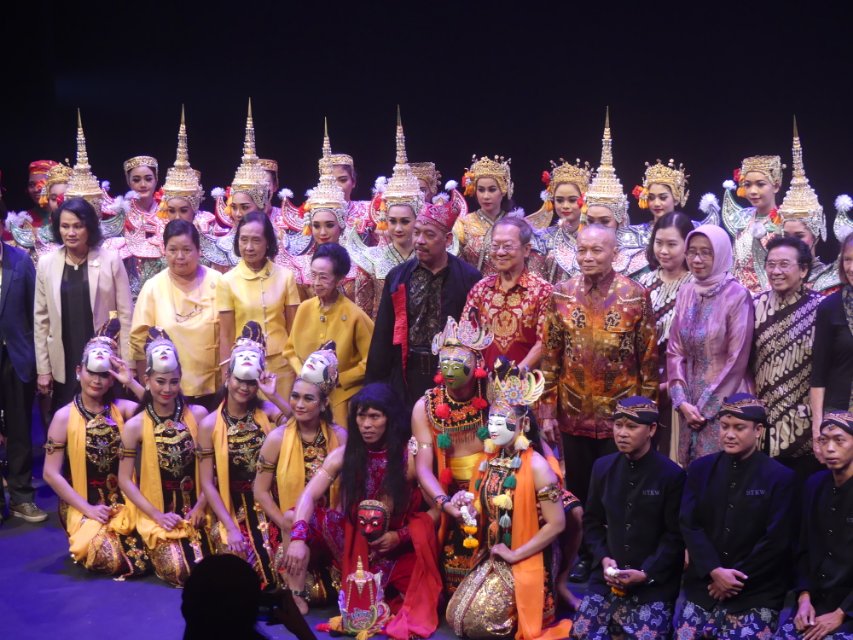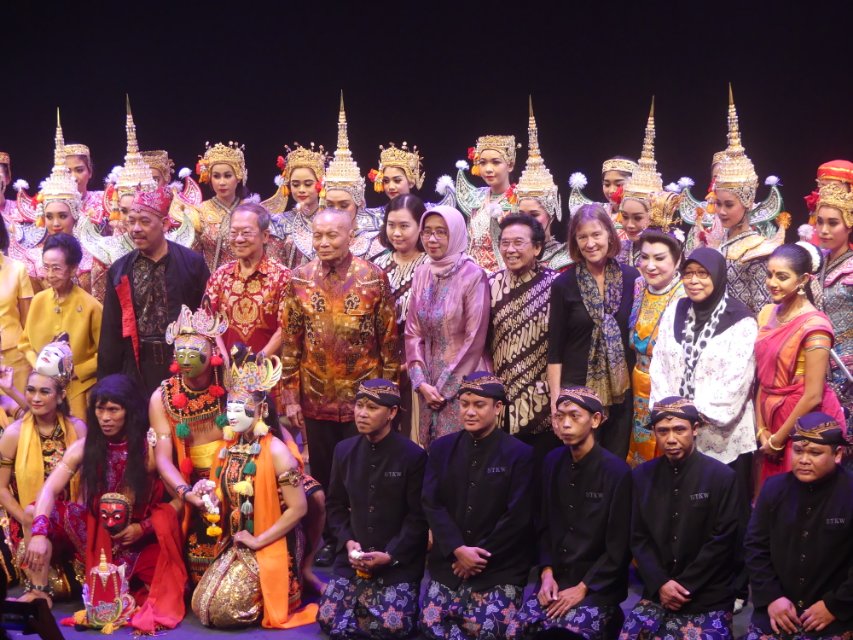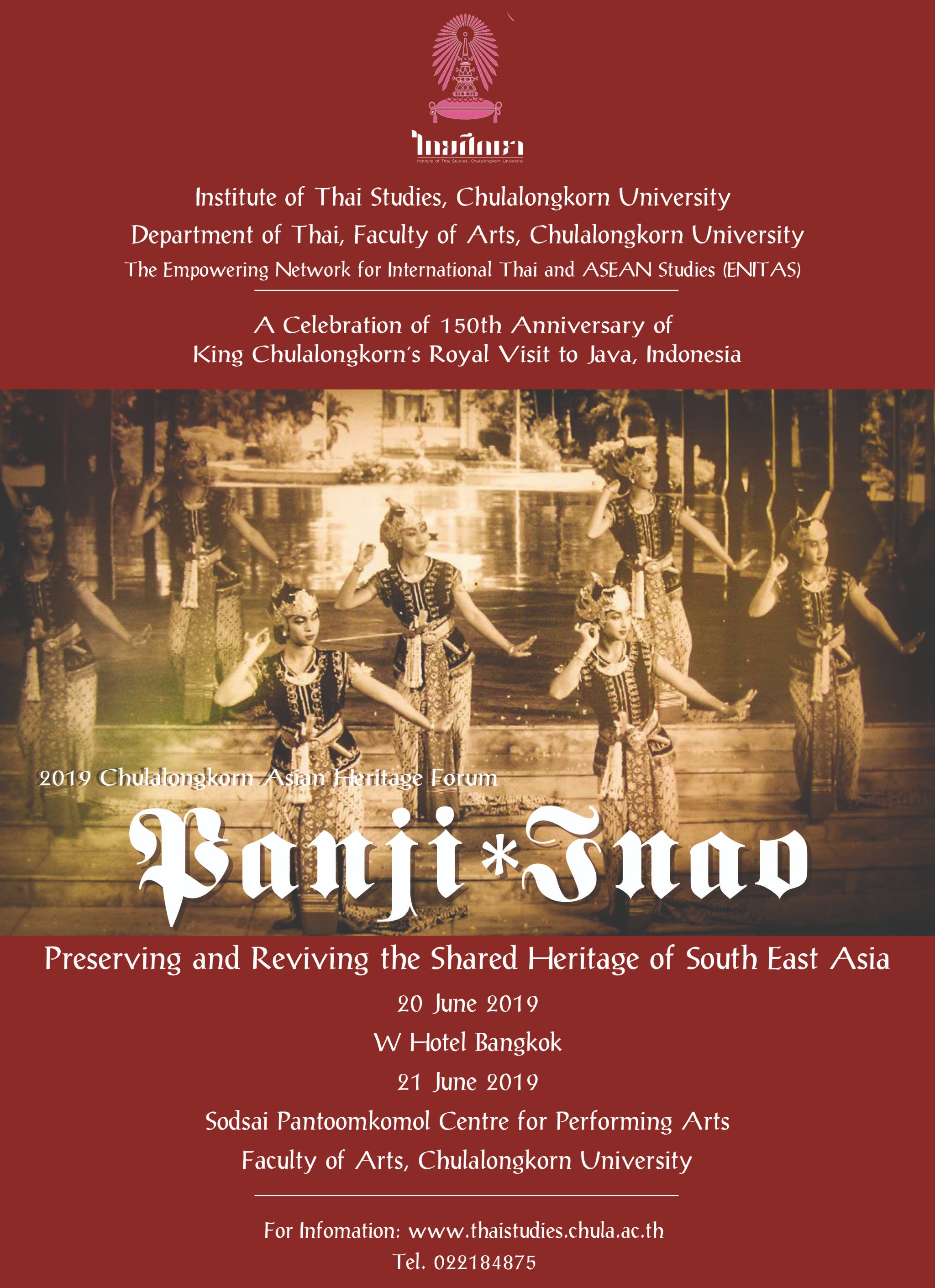Organizer (2019 Chulalongkorn Asian Heritage Forum : Panji/Inao - Preserving and Reviving the Shared Heritage of Southeast Asia)
An International Conference
2019 Chulalongkorn Asian Heritage Forum:
PANJI / INAO
PRESERVING AND REVIVING THE SHARED HERITAGE OF SOUTHEAST ASIA
A Celebration of
the 150th Anniversary of King Chulalongkorn’s
Royal Visit to Java, Indonesia
20-21 June 2019
W Bangkok Hotel
Sodsai Pantoomkomol Centre for Dramatic Arts,
Chulalongkorn University
Bangkok, Thailand
organized by
Institute of Thai Studies
Department of Thai, Faculty of Arts
Chulalongkorn University
Acknowledgements (2019 Chulalongkorn Asian Heritage Forum : Panji/Inao - Preserving and Reviving the Shared Heritage of Southeast Asia)
On behalf of the organizing committee, I would like to express my appreciation for the efforts of all the many people and organizations who have contributed to this event. This conference is a part of the celebration of the 150th Anniversary of King Chulalongkorn’s Royal Visit to Java, Indonesia.
Deep gratitude must be given to Ministry of Education and Culture, Director General of Culture, Indonesia and the College of Dramatic Arts, Ministry of Culture, Thailand who kindly arrange performances for this conference. As well, sincere appreciation is extended to all the scholars who have graciously accepted to share their wisdom in this venue.
This event has been arranged through the Empowering Network for International Thai and ASEAN Studies Project (ENITAS) that is being supported by the Research Partnership Project, Ratchadaphiseksomphot Endowment Fund, Chulalongkorn University.
Ritirong Jiwaganon
Director, Institute of Thai Studies
Chulalongkorn University
Program on 20 June 2019 (2019 Chulalongkorn Asian Heritage Forum : Panji/Inao - Preserving and Reviving the Shared Heritage of Southeast Asia)
08.30-09.00
Registration
OPENING CEREMONY
09.00-09.15
Opening address
KEYNOTE ADDRESS
09.15-09.45
The Many Faces of Panji: Highlights of Panji Literature and Culture in Indonesia
Wardiman Djojonegoro
– Expert to Ministry of Education and Culture, Indonesia
09.45-10.15
Panji Super Hero in Indonesia
I Made Bandem
– College of Information,Technology, and Communication
– “STIKOM Bali” in Denpasar, Indonesia
10.15-10.45
Refreshments
10.45-11.15
Inao as Living Cultural Heritage in Contemporary Thailand
Thaneerat Jatuthasri
– Department of Thai, Faculty of Arts, Chulalongkorn University, Thailand
11.15-11.45
Panji on the Move – Processes of Revival on Local, National, International Levels, and Its Potentiality
Lydia Kieven
– University of Bonn, Germany
11.45-13.00
Luncheon
13.00-13.30
The Fighter Princess Chantara Kirana in Panji Misarang
Cholada Ruengruglikit
– Department of Thai, Faculty of Arts, Chulalongkorn University, Thailand
13.30-14.00
Love in Panji Stories: Transcends All Boundaries and Barriers
Noriah Mohamed
– Former Principle Fellow at Institute of Malay World and Civilization, National University of Malaysia, Malaysia
14.00-14.30
Yodia Inao, the Royal Play in Inwa Palace
Mickey Heart
– Independent Scholar, Myanmar
14.30-15.00
Multicultural Panji on Stage: A Singapore Theatrical Experiment
Chua Soo Pong
– Hanoi Academy of Film and Theatre,
– Founder of The Chinese Opera Institute, Singapore
15.00-15.15
Closing Ceremony
Program on 21 June 2019 (2019 Chulalongkorn Asian Heritage Forum : Panji/Inao - Preserving and Reviving the Shared Heritage of Southeast Asia)
12.30-13.00
Registration
PERFORMANCE
13.00-13.30
Introduction
13.30-15.30
Court Dance-Drama (Lakhon Nai) : The Battle between Inao and Kamangkuning
The College of Dramatic Arts, Ministry of Culture, Thailand
Romance at the Forest
The Jade Opera House and the Singapore India Fine Arts Society, Singapore
Sekar Candrakirana Dance
Fragment from Panji Sekartaji Dance
Wilwatikta Institute of Arts Surabaya
– Arranged by Ministry of Education and Culture, Director General of Culture,
Indonesia
The Many Faces of Panji: Highlights of Panji Literature and Culture in Indonesia
Professor Dr Wardiman Djojonegoro
Expert, Ministry of Education and Culture, Indonesia
This paper describes the history of Panji literature and culture in Java since its appearance in the 14th century. The stories of the Javanese cultural hero prince, Inu Kertapati, mark the development of truly Javanese literature that was no longer overshadowed by the great Indian epics, the Ramayana and Mahabharata.
Set among the eastern Javanese kingdoms, the stories tell of Panji’s search for his beloved Princess Candra Kirana, before the two lovers are happily reunited. During the Majapahit Empire from the 14th to 15th centuries, the Panji stories became extremely popular, spreading from Java to Bali, Lombok, Sulawesi, Kalimantan and Sumatra.
The Panji tales were spread by merchants along the trading routes and crossed the borders to the Malay region, then further spread to Vietnam, Thailand, Myanmar and Cambodia. The Panji influence is described by renowned scholar Adrian Vickers as “a Panji civilization in Southeast Asia.”
Panji tales are unique as there was no single author; the tales were written by diverse authors who were creative in titles and content, using local culture and language. In Bali, Panji stories are called Malat, while in Malaysia, Hikayat. In Thailand and the neighboring countries, the character of Panji is known as Inao or Eynao and his lover as Bussaba.
Another unique feature of Panji is diversity, which is found in the writing material, manuscripts, art expressions and performing arts. As well, Panji tales have become the sources of inspiration of other forms of local culture, including dances, theatrical performances, traditional wayang (wayang beber, wayang kelir, wayang krucil) and mask performances. Panji tales are found engraved as reliefs on temples throughout East Java, with Panji featured as a character with a distinctive cap on his head.
In October 2017, manuscripts of Panji tales from Indonesia, Malaysia, Cambodia and the Netherlands were inscribed in the Memory of the World of UNESCO. The paper describes some aspects of the literature, especially the manuscripts, and one performing art, wayang beber.
(Presented in the 2019 Chulalongkorn Asian Heritage Forum : Panji/Inao – Preserving and Reviving the Shared Heritage of Southeast Asia, 20 June 2019, W Bangkok Hotel, Bangkok, organized by Institute of Thai Studies and Department of Thai, Faculty of Arts, Chulalongkorn University)
Panji Super Hero in Indonesia
Professor Dr I Made Bandem
College of Information, Technology, and Communication
“STIKOM Bali” in Denpasar, Indonesia
The Panji story was established by the 14th century during the Majapahit times in East Java in the form of the literary kidung. From there it is possible that it spread out to Malaya, Cambodia, Thailand, Bali, Central Java, West Java and other islands of Indonesia. Panji is an ideal and noble prince of Kauripan (Jenggala) who is invincible in battle and irresistible to women. His goal is always to reunite with his bride, Candrakirana, known as the Radiant Rays of the Moon. She was the princess of Daha (Kediri) and was forever eluding him.
There are innumerable versions of the Panji story found in Indonesia, i.e., Panji Kuda Semirang, Kuda Narawangsa, Panji Malat Rasmin, Panji Wangbang Wedeya and others. The survival of Panji stories presently is because of the many popular forms of performing and visual arts found in Java and Bali, such wayang gedog, wayang topeng, gambuh dance drama, legong keraton.
Panji can be considered a superhero most importantly because he is a character, who, albeit born in the pre-Hindu times, has survived the Hindu, Islam and post-independence eras of Indonesia. The ways the character has influenced and been influenced by the values and norms of the different eras without compromising its core traits of righteousness and fidelity, to a large extent, mirrors the journey of this archipelagic nation, which for centuries has embraced foreign influences, transforming them into its own, a rich and diverse culture that stays faithful to its root values.
(Presented in the 2019 Chulalongkorn Asian Heritage Forum : Panji/Inao – Preserving and Reviving the Shared Heritage of Southeast Asia, 20 June 2019, W Bangkok Hotel, Bangkok, organized by Institute of Thai Studies and Department of Thai, Faculty of Arts, Chulalongkorn University)
Inao as Living Cultural Heritage in Contemporary Thailand
Assistant Professor Dr Thaneerat Jatuthasri
Department of Thai, Faculty of Arts, Chulalongkorn University
The Panji story originated in East Java and subsequently spread to many regions of Southeast Asia. The story has been acknowledged as part of world heritage by UNESCO since 2017 when the collections of Panji manuscripts were included in the UNESCO Memory of the World Register. The Panji story was introduced to Thailand around the eighteenth century, at which time two Thai Panji versions were first composed, titled Inao, or Inao Lek, and Dalang, or Inao Yai. The two Inao stories have flourished and been a part of Thai arts and culture since. To this day, the two stories remain alive as a part of Thai cultural heritage. Of the two stories, the version titled Inao is more popular than Dalang, as many new productions of the Inao have appeared, for example, as novels, TV series, stage plays and pop songs, together with traditional representations. This paper aims to explore the continuation of the Inao tradition in contemporary Thai society by examining how Inao is presented and reinterpreted in order to survive in the modern context. The paper also discusses why the theme is still popular and significant in contemporary Thailand.
(Presented in the 2019 Chulalongkorn Asian Heritage Forum : Panji/Inao – Preserving and Reviving the Shared Heritage of Southeast Asia, 20 June 2019, W Bangkok Hotel, Bangkok, organized by Institute of Thai Studies and Department of Thai, Faculty of Arts, Chulalongkorn University)
Panji on the Move – Processes of Revival on Local, National, International Levels and Its Potentiality
Dr Lydia Kieven
University of Bonn, Germany
Within the last decades, the long-forgotten Panji arts and traditions have undergone a process of revitalization and enactment in Indonesia and international circles. A few scholarly studies and publications conducted between the 1970s and 1990s have opened academic interest and knowledge. On a local level, the re-discovery of this outstanding indigenous cultural heritage started in the late 1990s in East Java through the initiative of individual actors, followed by revitalization activities through environmentalists, artists, historians and archaeologists; the major intention was to unearth the values and forms of the Panji tradition and to convey them to strengthening the cultural identity of Javanese people.
In 2013, the Panji arts were given wider international attention through the SEAMEO-SPAFA festival and conference in Bangkok, highlighting the Panji/Inao-tradition as a common cultural thread of the ASEAN countries. The endeavour of registration of the Panji manuscripts as Memory of the World by UNESCO, which started in 2014 and run by the Indonesian National Library in cooperation with Leiden University Library, constituted, through large-scale festivals, seminars and exhibitions, enormous progress of popularizing the Panji literature and arts in local and academic circles in Java and Bali, as well as on an international level.
Conference panels, symposiums and performances in Europe in the last few years opened attention and contributed to a broader academic and popular expertise and interest in the Panji tradition. One outcome of these developments will be the forthcoming publication of a special Panji volume.
This paper discusses the broad range of the interdependent revitalization processes, both on independent and institutional levels. The discussion integrates the ongoing general discourse on dealing with cultural heritage. In particular, the question is raised about the potentiality, benefit and perspectives of the Panji tradition and transformation.
(Presented in the 2019 Chulalongkorn Asian Heritage Forum : Panji/Inao – Preserving and Reviving the Shared Heritage of Southeast Asia, 20 June 2019, W Bangkok Hotel, Bangkok, organized by Institute of Thai Studies and Department of Thai, Faculty of Arts, Chulalongkorn University)
The Fighter Princess Chantara Kirana in Panji Misarang
Professor Dr Cholada Ruengruglikit
Special Instructor in Department of Thai, Faculty of Arts, Chulalongkorn University
This paper aims at studying the fighter image of Princess Chantara Kirana, the heroine of Panji Misarang or The Story of Panji Misarang, one of the Thai Panji stories written by Princess Chalerm Khet Mongkhon in 1952. In the story, Princess Chantara Kirana fights for survival, for justice and for honour and dignity, appearing as both a male and female in her fight. It can be said that Princess Chantara Kirana is a real warrior heroine since she fights without any help from her celestial ancestors, as in other Thai Panji Stories. This image is markedly different from that of Inao in the version written by King Rama II, the most well-known version among Thai Panji Stories.
(Presented in the 2019 Chulalongkorn Asian Heritage Forum : Panji/Inao – Preserving and Reviving the Shared Heritage of Southeast Asia, 20 June 2019, W Bangkok Hotel, Bangkok, organized by Institute of Thai Studies and Department of Thai, Faculty of Arts, Chulalongkorn University)
Love in Panji Stories: Transcending All Boundaries and Barriers
Professor Noriah Mohamed
Former Principle Fellow at the Institute of Malay World and Civilization,
National University of Malaysia
The element of “love” has become a main theme in various stories that are usually not complete if not associated with love. Love can be about anything, as one expresses their love towards the country, parents, freedom or fellow human beings. This paper aims to study the definition of love as portrayed in various stories of Panji that first described the existence of a legendary prince in East Java Indonesia.
There are all sorts of love expressed in Panji, and they are not usually driven by lust. The love between fellow human beings is not limited to how they feel about each other, but is also about their relationship with the Creator and the love for oneself.
This paper looks at the relationship forged between Raden Inu Kertapati and Raden Galuh Candera Kirana as it is the foundation of one of the Panji love stories. With this unwavering bond of love, both characters are willing to face the risks in life with an intention to live together. Ultimately, love transcends all
(Presented in the 2019 Chulalongkorn Asian Heritage Forum : Panji/Inao – Preserving and Reviving the Shared Heritage of Southeast Asia, 20 June 2019, W Bangkok Hotel, Bangkok, organized by Institute of Thai Studies and Department of Thai, Faculty of Arts, Chulalongkorn University)
Multicultural Panji on Stage: A Singapore Theatrical Experiment
Professor Dr. Chua Soo Pong
Hanoi Academy of Film and Theatre
Founder of The Chinese Opera Institute, Singapore
As a multicultural nation whose people originated from the Malay Peninsula, as well as Indonesia, China and India, Singapore has a dynamic tradition of mutual interpenetration of performing styles and cultural conventions. The city-state is not a melting pot of the Malay, the Chinese and the Indian, but a society where each ethnic group is encouraged to preserve their community’s unique cultural heritage and arts, and appreciate and respect that of others. The performing arts have the unique ability to bring people together and promote social cohesiveness. Long before it became independent in 1965, artists of different communities had been learning dance and music from each other and experimenting with cross cultural theatrical and dance productions.
This paper selects examples from the past to illustrate the development of multicultural performing arts. These included how Indian choreographer K.P. Bhaskar was impressed by Chinese opera movies and transformed the story of “Butterfly Lovers” as a Bharatanatyam dance drama. Liang Qiao Zhen, a Chinese choreographer, on the other hand, learned Malay dance and created a “Rice Sieving Dance” in Malay dance style. Som Said, founder of the Malay dance group, Sri Warisan, used Chinese dance elements in many dances she choreographed.
This paper highlights theatrical experiments in seeking ways to establish communication based on theatrical expression, which goes beyond language and culture. Apart from tracing the path taken by early work in staging Ramayana and Mahabharata as Chinese opera, the paper summarizes the process of setting the Panji story in the historical reality of China with Chinese ethical values. The presentation is based on the traditional Chinese opera, dance and theatre in an innovative way. However, this was not done in an old-fashioned manner, but in a creative way, overcoming linguistic and cultural barriers.
(Presented in the 2019 Chulalongkorn Asian Heritage Forum : Panji/Inao – Preserving and Reviving the Shared Heritage of Southeast Asia, 20 June 2019, W Bangkok Hotel, Bangkok, organized by Institute of Thai Studies and Department of Thai, Faculty of Arts, Chulalongkorn University)
Romance at the Forest
The Jade Opera House and the Singapore India Fine Arts Society, Singapore
The opening scene from “Tale of the Black Forest” is a cross cultural production written and directed by Chua Soo Pong in 2015. After its premiered in Singapore the 90-minute production was invited to perform in Belgium. The abstract to be presented in Bangkok at the Festival organized Chulongkorn University is the opening scene which shows Prince Panji leading a group of royal guards to the forest. Prince Panji spots a beautiful deer and is attracted by the loveliness of the animal. He orders his guards to chase the deer. On this way to search for the deer, he sees a village girl with a basketful of clothes in the wood. To avoid the horse knocking down the girl, Prince Panji pulls the horse reins so hard that he falls from the horse. The girl and immediately falls in love at the first encounter. She is Dewi, who has an identical twin sister.
Prince Panji: Hong Kun Yu
Hong Xiu Yu is the Artistic Director and Founder of Jade Opera Group (JOG) in Singapore. She was the troupe leader and star of Hong Xiu Yu Hokkien Opera Troupe in Taiwan established in 1990, played the main Xiaosheng (young scholar role) in numerous television opera with Yang Li Hua Hokkien Opera Troupe in the late 70s and throughout the 1980s. Hong Xiu Yu won acclaim in many memorable productions. The Xiaosheng role she enacted is unique and has a magnetic singing voice. In 2003, he came to Singapore and soon after was appointed as the Senior Teacher at the Chinese Opera Institute until 2010. She has worked closely with Chua Soo Pong in many innovative new Hokkien opera, adapting classics of the East and West. There included 'Ramayana', 'Mahabharata', and masterpieces of Shakespeare, Moliere and Brecht. She has also created Taiwanese drama series “Chi Jiao Po” and “Yin Guo Chan” that adapts the artistic elements of Hokkien opera. Productions she directed were invited to perform at international theatre festivals in Indonesia, Iran and Malaysia Other operas that were well received included " The Haunted Temple" , "The Chalk Circle" , adapted from Brecht's play of the same title. “Tang Bo Hu the Witty Scholar”and "The Painted Skin" etc. Hong Xiu Yu has also been performing in the Arts Education Programme of the Chinese Opera Institute (from 2004 to 2010) and the AEP of the Traditional Arts Centre (2012-). Hong Xiu Yu also perform several Huangmei operas in Singapore and abroad. She appeared in Festivals held in Bangladesh and the United States in 2010. Singapore:
Kshirja Govind
Currently an advanced level Bharatanatyam student at Singapore Indian Fine Arts Society (SIFAS), Singapore under Guru P.N.Vikas. Kshirja was awarded the ‘Natya Visharad” on completion of her Dance Diploma at Singapore Indian Fine Arts Society in 2018, and the best students award in 2016.
A regular solo performer Kshirja has been presented at various leading Natyanjali and Sabhas in Singapore and India. Kshirja was adjudged in 2019 as the Best performer at the Bharat Ntriya Utsav dance festival , in Chennai India. Kshirja was conferred “Future Face of Indian Classical Dance” by the Indian International Dance festival in 2018 and “Hidden Idol” in 2016 and won numerous prizes at various competitions.
(Presented in the 2019 Chulalongkorn Asian Heritage Forum : Panji/Inao – Preserving and Reviving the Shared Heritage of Southeast Asia, 21 June 2019, Sodsai Pantoomkomol Centre for Dramatic Arts, Faculty of Arts, Chulalongkorn University, organized by Institute of Thai Studies and Department of Thai, Faculty of Arts, Chulalongkorn University)
Sekar Candrakirana Dance
Wilwatikta Institute of Arts Surabaya
Arranged by Ministry of Education and Culture, Director General of Culture, Indonesia
Candrakirana is the heroine in the Panji tales, and inspired many stories and episodes of her adventures in various performing arts. When Candrakirana was banished from the Palace by the King, she went into the woods where she met many hermits and ogres, undergone many adventures, and meet many obstacles. The dance depicts the steadfastness of Candrakirana in facing the adversaries and trials during her adventure. The dance was developed by the Malang Dance group, south of East Java
Artists:
Nafa dessy AP
Muti’ah Nur Aini
Nurya Dina Abrilia
Nisrina Ulfah F
Traditional Music Musicians
Mochamad Maskur
Yuddan Fijar ST
Mochamad pungki
Joko Susilo
Suwandi Widianto
Catur Fredy Wiyogo
(Presented in the 2019 Chulalongkorn Asian Heritage Forum : Panji/Inao – Preserving and Reviving the Shared Heritage of Southeast Asia, 21 June 2019, Sodsai Pantoomkomol Centre for Dramatic Arts, Faculty of Arts, Chulalongkorn University, organized by Institute of Thai Studies and Department of Thai, Faculty of Arts, Chulalongkorn University)
Fragment from Panji Sekartaji Dance
Wilwatikta Institute of Arts Surabaya
Arranged by Ministry of Education and Culture, Director General of Culture, Indonesia
The Dance depicts the situation of Panji Inu Kertapati and his fiance Dewi Sekartaji, where their Kingdom who was under siege from a King from abroad, Prabu (King) Kelono Sewandono, who wants to marry Dewi Sekartaji. Panji Inu Kertapati or Panji Asmorobangun was in deep distress, because his fiancé run into the woods. When at last the two lovers meet, the foreign King was very angry, and a fight ensued. King Kelono Sewandono was defeated, and the two lovers is happily together again.
Artists:
RADEN PANJI ASMOROBANGUN : Parrisca Indra Perdana
PRABU KLONO SEWANDONO : Moh Hariyanto
DEWI SEKARTAJI : Rischa Alfionita
LADY IN WAITING : Nafa dessy AP
LADY IN WAITING : Muti’ah Nur Aini
LADY IN WAITING : Nurya Dina Abrilia
LADY IN WAITING : Nisrina Ulfah F
Traditional Music Musicians
Mochamad Maskur
Yuddan Fijar ST
Mochamad pungki
Joko Susilo
Suwandi Widianto
Catur Fredy Wiyogo
(Presented in the 2019 Chulalongkorn Asian Heritage Forum : Panji/Inao – Preserving and Reviving the Shared Heritage of Southeast Asia, 21 June 2019, Sodsai Pantoomkomol Centre for Dramatic Arts, Faculty of Arts, Chulalongkorn University, organized by Institute of Thai Studies and Department of Thai, Faculty of Arts, Chulalongkorn University)
Organizing Committee (2019 Chulalongkorn Asian Heritage Forum : Panji/Inao - Preserving and Reviving the Shared Heritage of Southeast Asia)
ADVISORS
Prof Dr Bundhit Eua-arporn
President, Chulalongkorn University
Prof Dr Kiat Ruxrungtham
Vice President for Research and Innovation,
Chulalongkorn University
Asst Prof Dr Pomthong Malakul Na Ayudhaya
Vice President for Academic Affairs,
Chulalongkorn University
CHAIR
Assoc Prof Ritirong Jiwaganon
Director, Institute of Thai Studies,
Chulalongkorn University
VICE CHAIR
Asst Prof Dr Siriporn Phakdeephasook
Head, Department of Thai, Faculty of Arts,
Chulalongkorn University
COMMITTEE
Asst Prof Dr Arthit Thongtak
Deputy Director of Administrative Affairs
Institute of Thai Studies, Chulalongkorn University
Asst Prof Dr Pram Sounsamut
Deputy Director of Research Affairs
Institute of Thai Studies, Chulalongkorn University
Dr Suebpong Changboonchoo
Deputy Director of International Affairs
Institute of Thai Studies, Chulalongkorn University
Asst Prof Dr Thaneerat Jatuthasri
Lecturer, Department of Thai, Faculty of Arts,
Chulalongkorn University
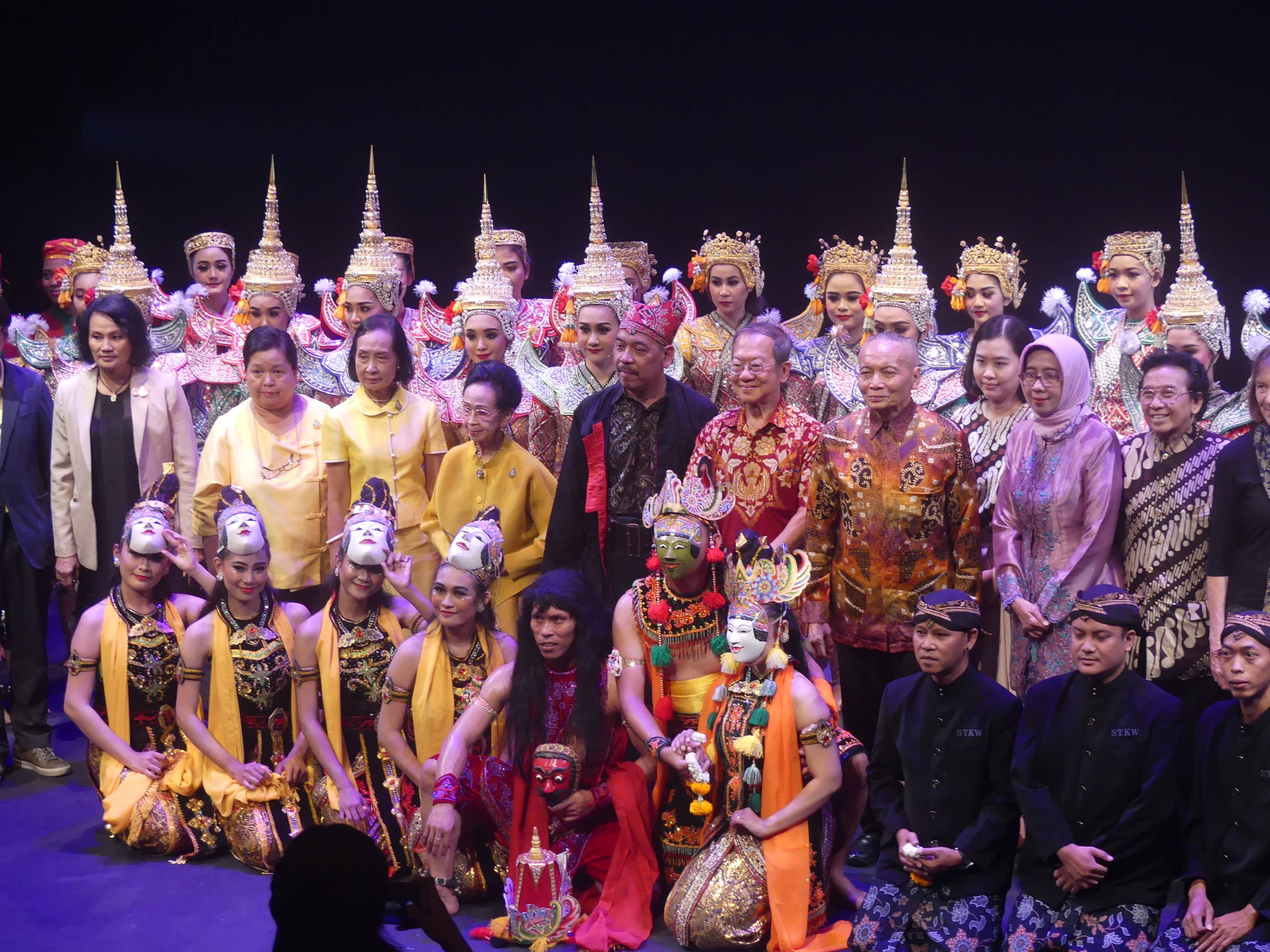
[Photo Album] 2019 Chulalongkorn Asian Heritage Forum : Panji/Inao - Preserving and Reviving the Shared Heritage of Southeast Asia
Institute of Thai Studies, Chulalongkorn University and Department of Thai, Faculty of Arts, Chulalongkorn University organized the international conference, 2019 Chulalongkorn Asian Heritage Forum : Panji/Inao – Preserving and Reviving the Shared Heritage of Southeast Asia on June 20-21, 2019 at the W Bangkok Hotel, and the Sodsai Pantoomkomol Centre for Dramatic Arts, Faculty of Arts, Chulalongkrn University, Bangkok, Thailand.
Sincere appreciation is extended to all the scholars who have graciously accepted to share their wisdom in this venue. Their contribution is a genuine reflection of the success of this auspicious conference.
Deep gratitude must be given to Ministry of Education and Culture, Director General of Culture, Indonesia, the Jade Opera House and the Singapore India Fine Arts Society, Singapore and the College of Dramatic Arts, Ministry of Culture, Thailand who kindly arrange performances for this conference.




